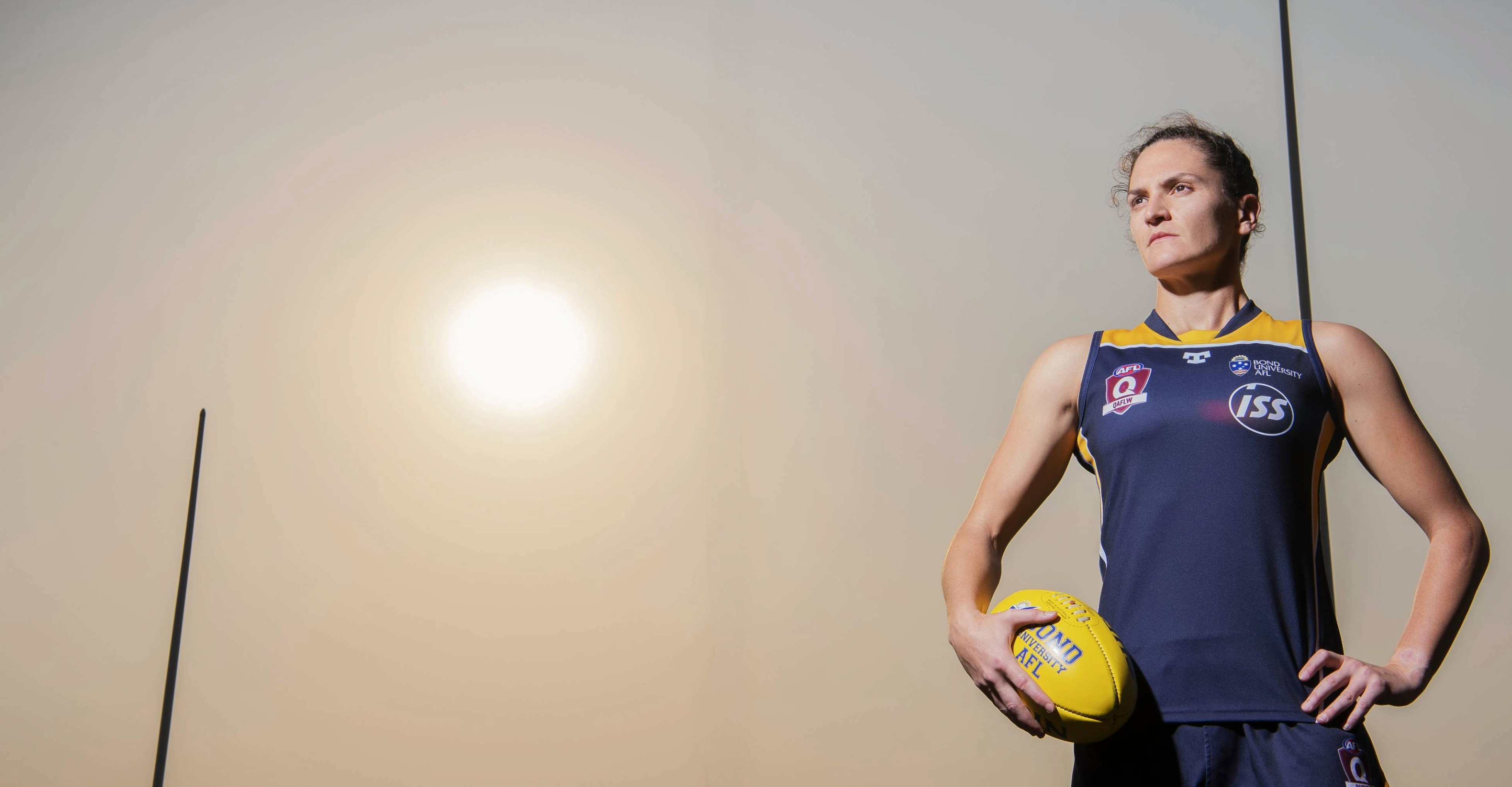
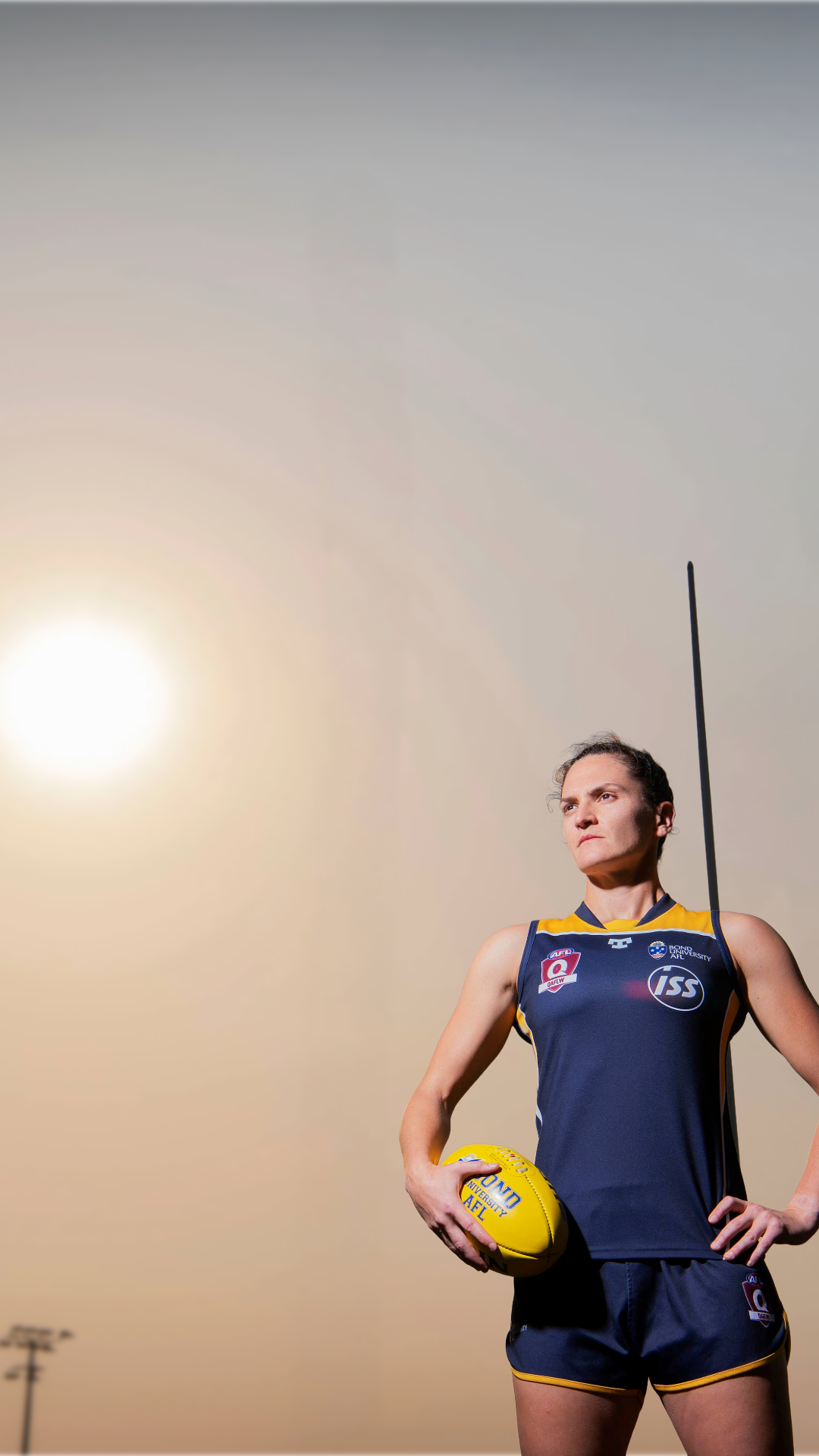
Laura Ernst played in the inaugural season of the Australian Football League Women's (AFLW) for Carlton. She’s now a Higher Degree by Research (HDR) student in Bond’s Faculty of Health Science and Medicine where she is researching concussion in female athletes.
Laura Ernst (née Attard) was 11 and in her final year of Auskick when she first ran onto the MCG field. The only girl in a swarm of boys in the 1990’s, her mere presence elicited laughs from their young halftime opposition. Her enthusiasm for the game meant she was mostly undeterred by smart remarks. But her little brother, standing at her side in the players’ race, was quick to tell their rivals to keep an eye out for Laura. If they were steadfast AFL fans, then 20 years on they would have watched her, perhaps unknowingly, make her debut in the inaugural AFL Women's match in February 2017.
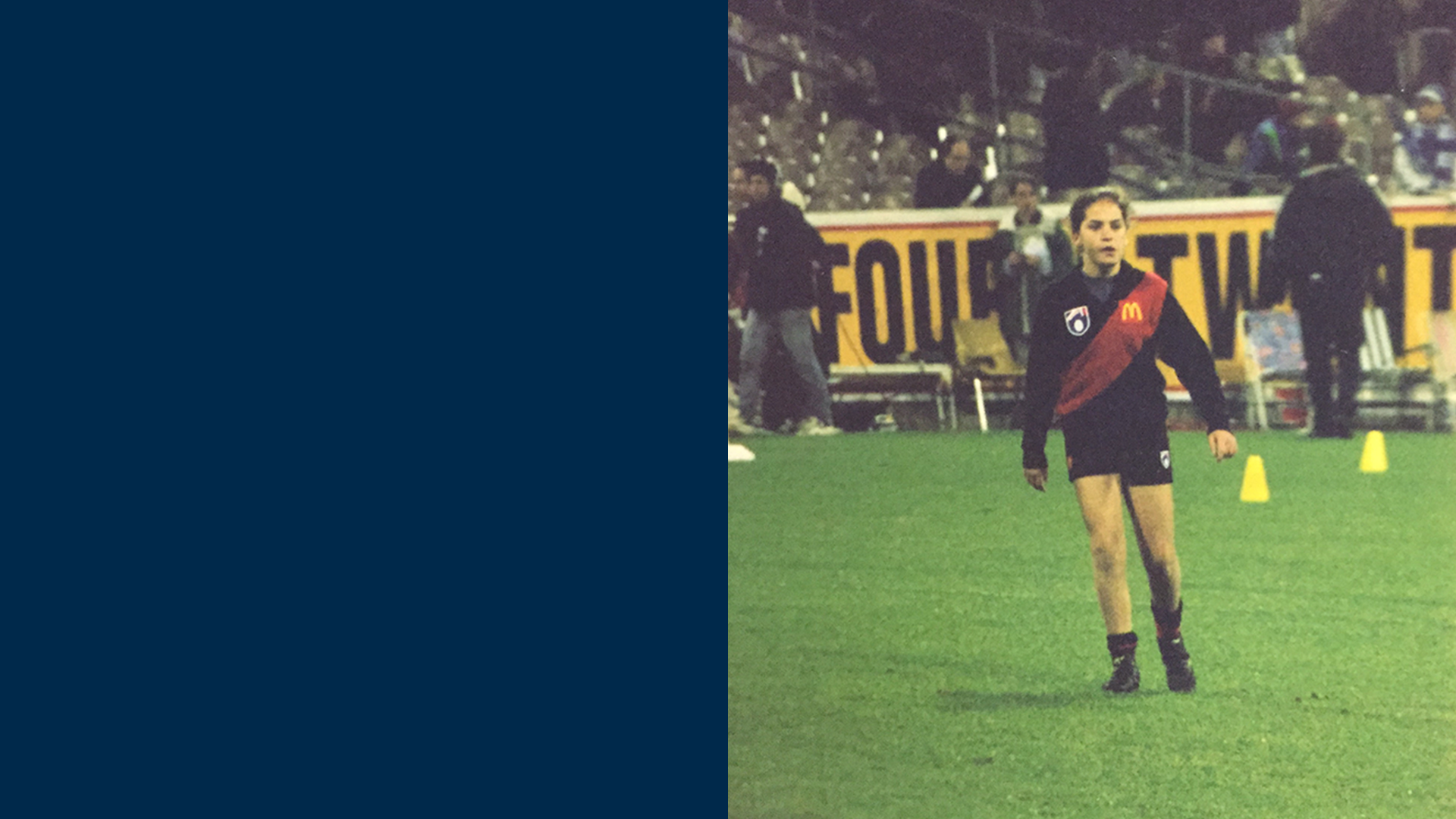
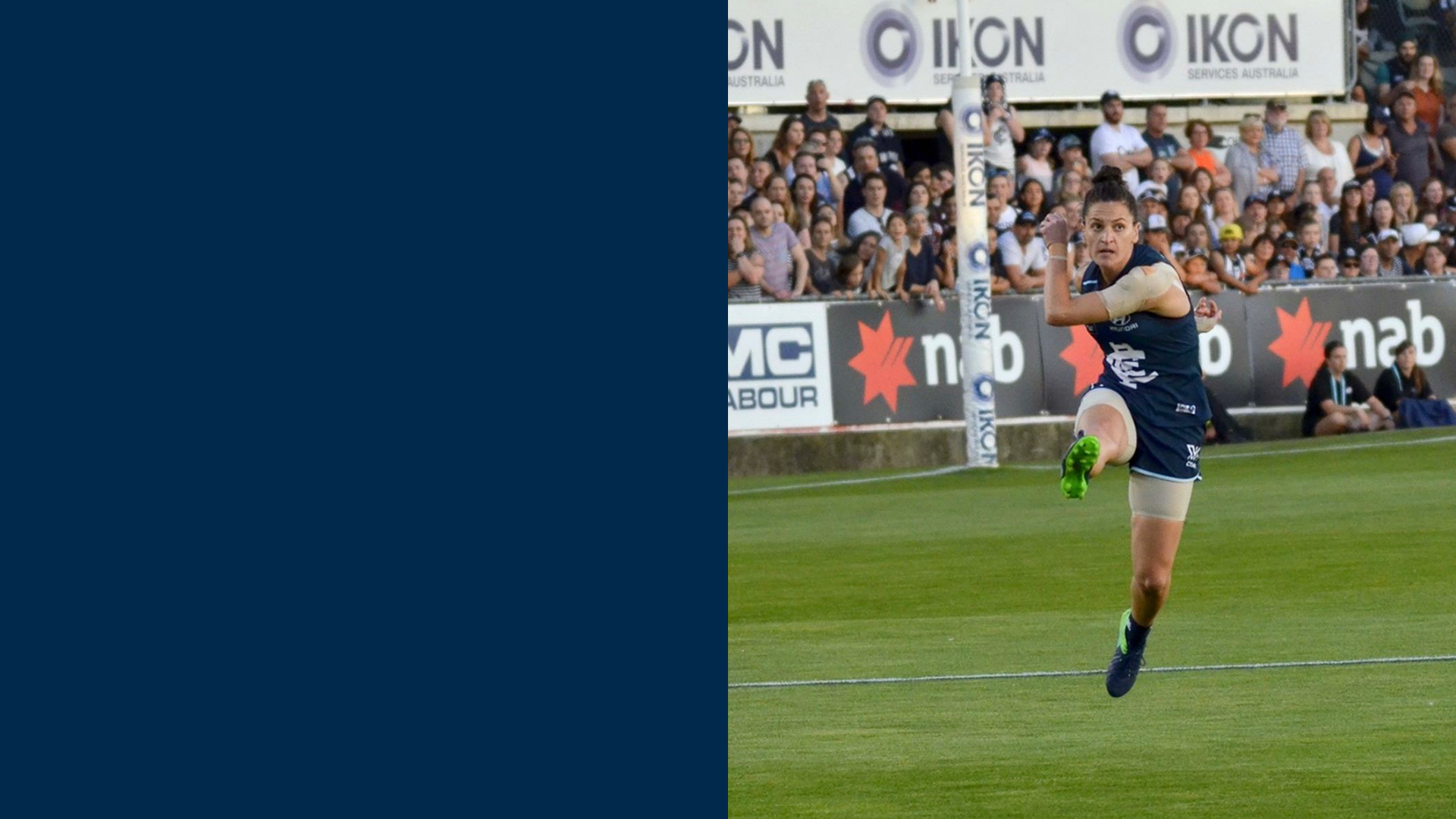
“The night I got drafted, I looked back at that photo of a young me in the middle of the MCG,” she says.
“I was living out a childhood dream.”
Benched dreams
Laura faced significantly more hurdles and roadblocks in her path to professional football compared to the boys she joined at the MCG as an Auskicker. At 13, she was told she was no longer allowed to play alongside the boys she had spent years training with in the muddy grass.
“That actually had quite a negative impact because I really wanted to play and I felt like I was missing out on a lot,” she says. “It was what I was passionate about.”
Laura spent every weekend at AFL games with her nan— an 'absolutely mad North Melbourne supporter' who was thrilled to share her devotion with a sixth generation of footy fans.
“As a young kid, I loved it and I loved being part of it… as a teenager, [being excluded] made me feel quite isolated.”
At 18, Laura discovered her university had a women’s team and felt like she found herself again.
“I found the place where I felt comfortable, where I had a lot to offer. It played into my strengths and helped me become resilient and have great work ethic," she says.
Resilience, work ethic, and social networks are among the lifelong benefits Laura says team sports like AFL provide teenagers — strengths they should be encouraged to develop regardless of gender.
Her favourite part of joining the AFLW wasn’t the euphoria of playing before a capacity crowd of 24,500 at the inaugural match, but demonstrating new possibilities to young girls.
“I loved being involved in clinics. I was contributing to a pathway that wasn’t there for me when I was younger,” she says.
“I have two daughters, and there’s no pressure, but I love that they can have that opportunity all the way through now because the pathways are there from day dot.”
Gaps in the women's game
As the first couple of AFLW seasons played out, Laura says there was a certain level of pressure felt amongst the players to prove they were as tough as their male counterparts, particularly given games began being televised. Those who had been in state league competitions with limited strength and conditioning training were suddenly placed on elite programs with an intensity they had never been exposed to.
“There was no research about it at the time, but I believe the girls were putting their bodies on the line in ways they wouldn’t have previously,” Laura says.
At the same time, it became obvious that the gender gaps in professional sport extended beyond junior development. Laura says while things are slowly changing, women’s health and menstrual cycles weren’t spoken about when she was playing AFLW. And support networks around mental health varied depending on the club.
“I think there’s been a battle in this semi-professional environment between balancing salary caps, resourcing and working out how to spend the money wisely to get the best support for players,” she says.
“Until the investment is on par with the men’s elite level, we’re going to see gaps.”
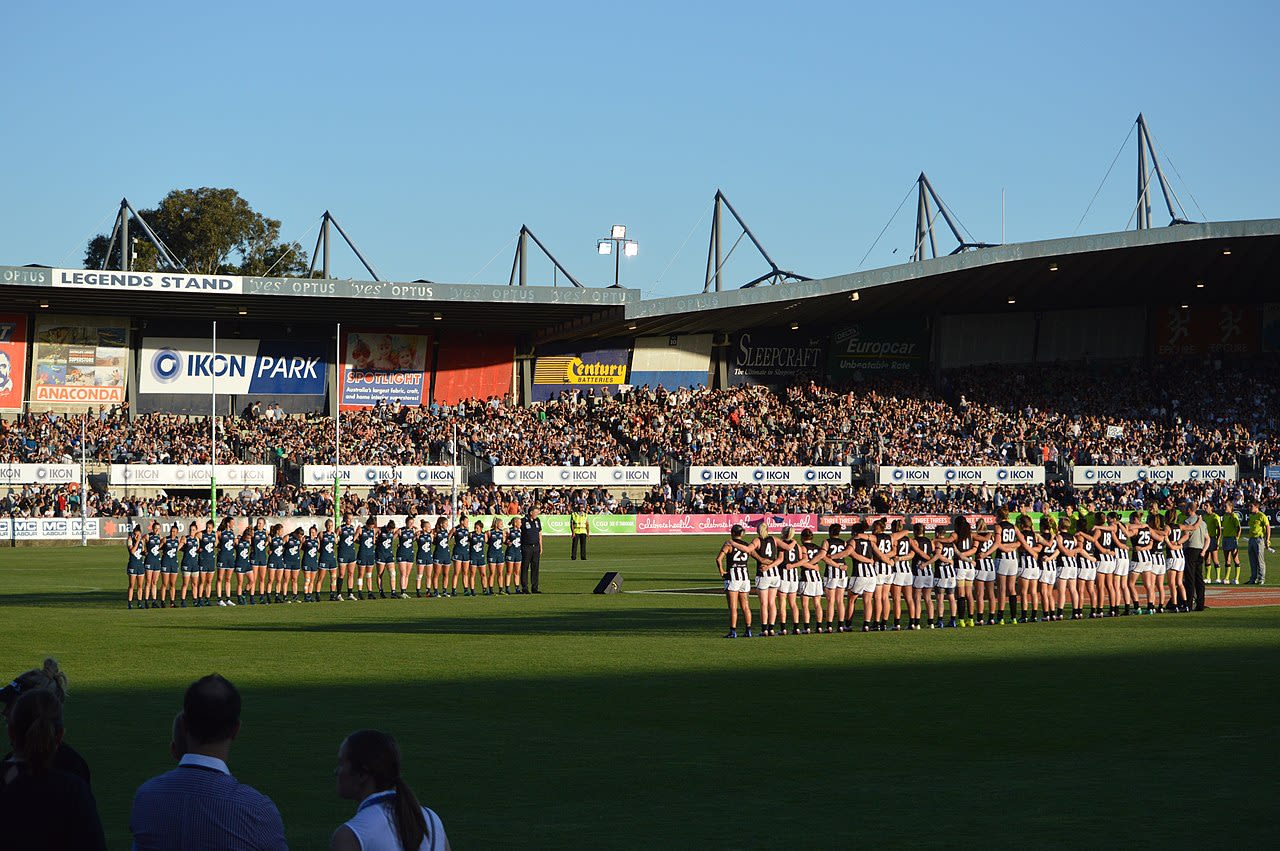
Laura was most concerned about a lack of research and understanding around concussion in female athletes. She suffered a concussion towards the end of her career during the Queensland Winter Series while trying to get picked up again by an AFLW expansion team. She says there was little information available on protocol, rehabilitation, and recovery for female athletes at the time.
“With what I was trying to achieve, it was frustrating there was little evidence out there around the right thing to do for me as a female player,” she says.
“All the literature that was out there was in the men’s space. And I think that experience motivated me to go down my next path.”
She says the stigma around concussion also came as a shock to her, having played the game for 15 years before suffering her first concussion.
“I think contact and collision sporting codes have a duty of care to encourage meaningful and informed conversations and education around concussion with both players and staff. Whilst there have certainly been advancements in this area over recent times, we do have room for improvement in this space”.
Evening the playing field
Laura moved to Queensland in 2019 and began studying a Doctor of Physiotherapy at Bond University on the Riewoldt Family AFL Excellence Scholarship. She got chatting to Associate Professor of Physiotherapy Dr Nikki Milne and realised she was well positioned to explore the gap in literature around concussion in female athletes.
After completing her degree, Laura was settling on a HDR topic when fellow AFLW player Heather Anderson, who died in November 2022, was found to have chronic traumatic encephalopathy, a progressive degenerative brain disease caused by repeated head injuries.
“The discovery was close to home. We don’t know enough about the serious and lifelong consequences associated with concussion, particularly for female athletes. Nor do we have a comprehensive understanding of the unique risk factors associated with concussion for females participating in contact and collision sports," she says.
“I felt like it was a priority that needed to be addressed.”
Laura’s first research output was a systematic review of the incidence and risk factors for sport-related concussion associated with contact and collision invasion sports in female youth. The meta-analysis of risk factors reinforced a lack of research, and there wasn’t enough data to find whether helmets were a protective factor or a risk factor. The systematic review also found more concussions were occurring in matches than training, and that concussion incidence for female youth contact and collision athletes is higher than previous literature has reported.
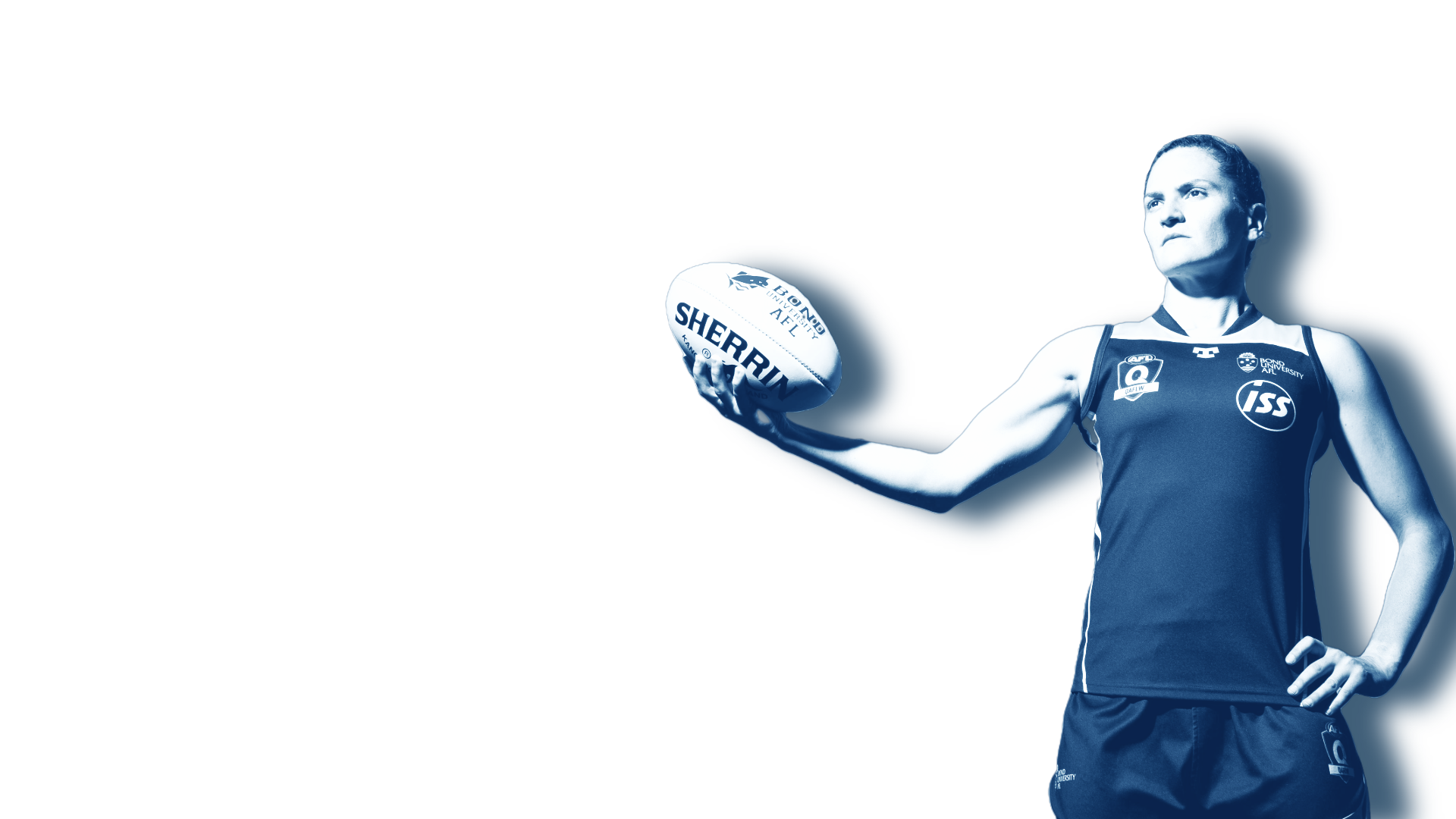
Evening the playing field
Laura moved to Queensland in 2019 and began studying a Doctor of Physiotherapy at Bond University on the Riewoldt Family AFL Excellence Scholarship. She got chatting to Associate Professor of Physiotherapy Dr Nikki Milne and realised she was well positioned to explore the gap in literature around concussion in female athletes.
After completing her degree, Laura was settling on a HDR topic when fellow AFLW player Heather Anderson, who died in November 2022, was found to have chronic traumatic encephalopathy, a progressive degenerative brain disease caused by repeated head injuries.
“The discovery was close to home. We don’t know enough about the serious and lifelong consequences associated with concussion, particularly for female athletes. Nor do we have a comprehensive understanding of the unique risk factors associated with concussion for females participating in contact and collision sports," she says.
“I felt like it was a priority that needed to be addressed.”
Laura’s first research output was a systematic review of the incidence and risk factors for sport-related concussion associated with contact and collision invasion sports in female youth. The meta-analysis of risk factors reinforced a lack of research, and there wasn’t enough data to find whether helmets were a protective factor or a risk factor. The systematic review also found more concussions were occurring in matches than training, and that concussion incidence for female youth contact and collision athletes is higher than previous literature has reported.

“We don’t know enough about the serious and lifelong consequences associated with concussion.”
Laura is working alongside other Bond researchers who aim to produce four research outputs as part of the project . It’s anticipated the findings will provide a foundation of evidence to support the development of a concussion prevention program for female players, their coaches, and sport practitioners.
“My supervising team is amazing, and I have people who will stop me in the hallways at Bond to chat about my research because they're genuinely interested,” Laura says.
“I’ve been to a couple of other universities, through my undergraduate degree and my diploma of education, and what I found at Bond is that you’re not just a number. My experience has been much more personal.”
Laura feels like she is 'scratching the surface' with her current research project. She hopes the future will see more female representation throughout all areas of sport and wants to contribute to more resources to support these athletes.
For her younger self, the girls like her, and her AFL-crazed nan, Laura has set out to fill the gaps that can shape the game around female athletes.
“I’m hopeful our research outputs can help girls going through the talent pathways to have really long careers with less injury burden.”
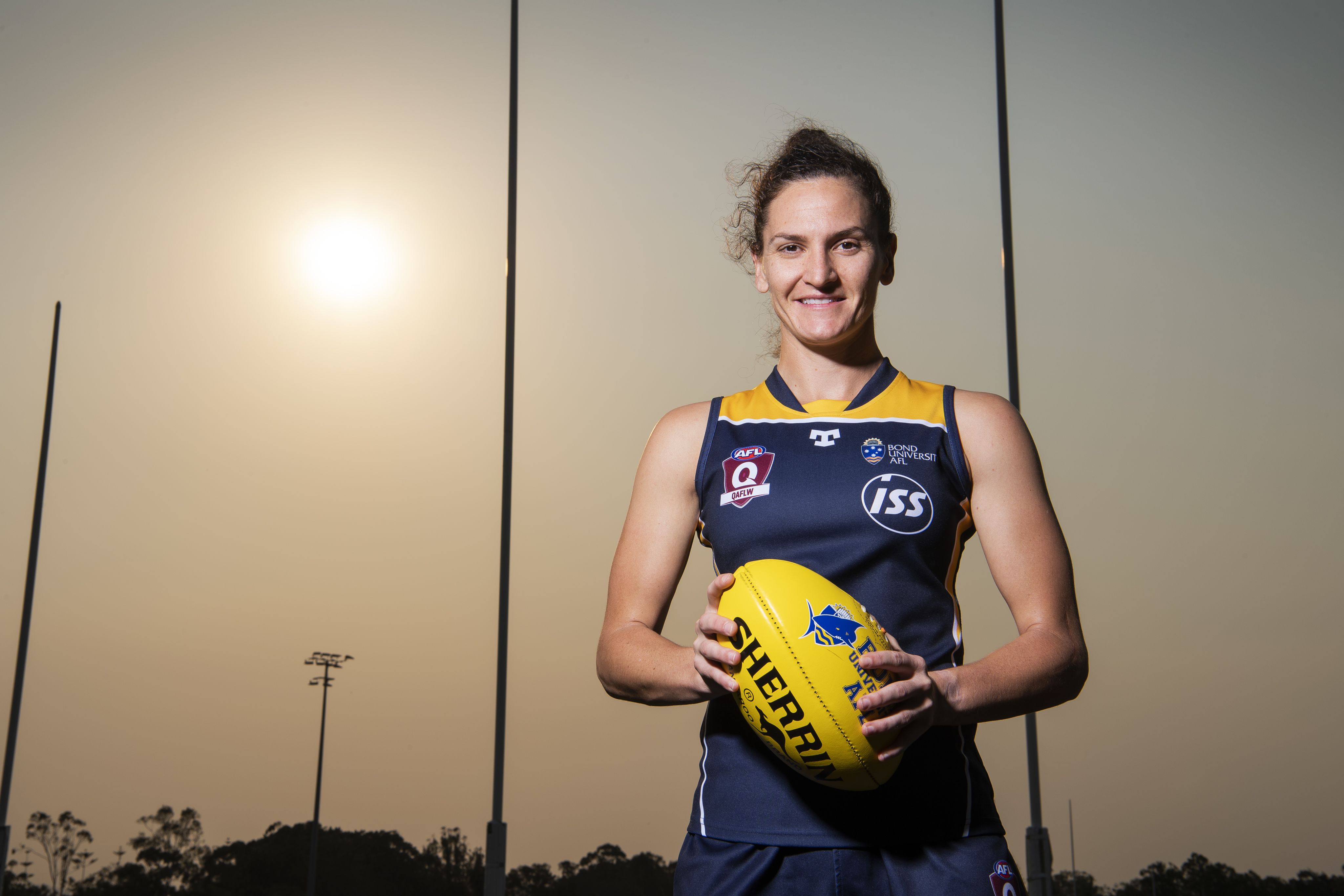
Published on Wednesday, 4 June, 2025.

Original thinking direct to your inbox

Stories from Bond